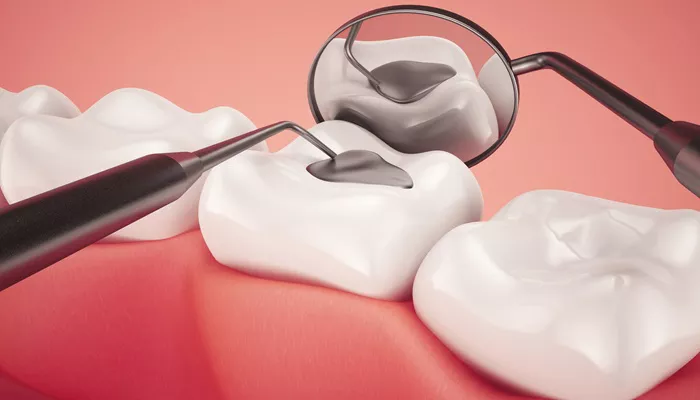Dental health is a vital aspect of overall well-being, and one common procedure that plays a crucial role in maintaining it is the use of permanent tooth fillings. This article delves into what permanent tooth fillings are, their importance, types, procedures involved, and aftercare. By understanding these elements, patients can make informed decisions about their dental health.
What Are Permanent Tooth Fillings?
Permanent tooth fillings are restorative materials used to repair teeth that have been damaged due to decay, fractures, or other issues. When a tooth decays, it creates a cavity—a hole that can lead to further complications if not treated promptly.
A filling serves to “fill” this cavity, restoring the tooth’s structure and function. Unlike temporary fillings, which are meant for short-term use, permanent fillings are designed to last for several years, providing a durable solution for dental issues.
Importance of Permanent Tooth Fillings
The primary purpose of permanent fillings is to prevent further decay and damage to the tooth. Here are some key reasons why they are important:
Restoration of Function: Fillings restore the ability to chew and bite properly.
Prevention of Further Decay: By sealing off the cavity, fillings prevent bacteria from entering and causing additional decay.
Aesthetic Improvement: Many filling materials can match the natural color of teeth, improving appearance.
Cost-Effectiveness: Addressing dental issues early with fillings can prevent more extensive and expensive treatments later on.
Types of Permanent Tooth Fillings
There are several types of materials used for permanent fillings, each with its advantages and disadvantages:
Amalgam Fillings: Made from a mixture of metals including silver, mercury, tin, and copper. Amalgam is durable and cost-effective but is less aesthetic due to its metallic color.
Composite Resin Fillings: These are tooth-colored materials that blend well with natural teeth. They are suitable for visible areas but may not be as durable as amalgam in high-pressure areas.
Ceramic Fillings: Made from porcelain or glass materials, these fillings are highly aesthetic and resistant to staining but can be more expensive.
Gold Fillings: Known for their durability and resistance to corrosion, gold fillings can last many years but come at a higher cost compared to other options.
Glass Ionomer Fillings: These release fluoride which can help protect the tooth from further decay. They are typically used in areas not subjected to heavy chewing pressure.
The Procedure for Getting a Permanent Filling
The process of obtaining a permanent filling generally involves several steps:
1. Evaluation
Before any procedure begins, the dentist will evaluate the affected tooth through visual inspection and X-rays if necessary.
This helps determine the extent of decay and the appropriate type of filling material.
2. Anesthesia
To ensure patient comfort during the procedure, local anesthesia is administered to numb the area around the affected tooth. This step is crucial as it minimizes discomfort during drilling.
3. Removal of Decay
Once the area is numb, the dentist uses specialized tools—such as drills or lasers—to remove decayed portions of the tooth.
This step ensures that all infected material is eliminated before placing the filling.
4. Cleaning and Preparation
After removing decay, the dentist cleans the cavity thoroughly to eliminate any bacteria or debris. This preparation is essential for ensuring that the filling adheres properly.
5. Filling Application
The chosen filling material is placed into the cavity. For composite resin fillings, this may involve layering the material and using a special light to harden each layer before adding more.
6. Shaping and Polishing
Once filled, the dentist shapes the filling to ensure it fits comfortably within your bite. Finally, they polish the filling surface for a smooth finish.
Aftercare for Permanent Fillings
Proper aftercare following a filling procedure is essential for maintaining oral health:
Avoid Hard Foods: For at least 24 hours post-procedure, avoid chewing hard foods on the filled tooth to allow it to set properly.
Maintain Oral Hygiene: Brush gently around the filled area and continue regular oral hygiene practices.
Regular Dental Check-ups: Schedule follow-up visits with your dentist to monitor the condition of your fillings and overall dental health.
Watch for Sensitivity: Some patients may experience sensitivity after getting a filling; this usually subsides within a few weeks but should be reported to a dentist if it persists.
Longevity of Permanent Fillings
The lifespan of permanent fillings varies by material used:
Amalgam Fillings: Lasting between 10 to 15 years.
Composite Resin Fillings: Typically last about 5 to 10 years.
Ceramic Fillings: Can last up to 15 years or more.
Gold Fillings: Known for their durability; they can last over 20 years with proper care.
Regular dental check-ups can help extend the life of fillings by ensuring any issues are addressed promptly.
Conclusion
Permanent tooth fillings play an essential role in restorative dentistry by repairing damaged teeth and preventing further complications due to decay or trauma. Understanding what they are, their importance, types available, procedures involved in placement, aftercare requirements, and expected longevity can empower patients in managing their dental health effectively.

